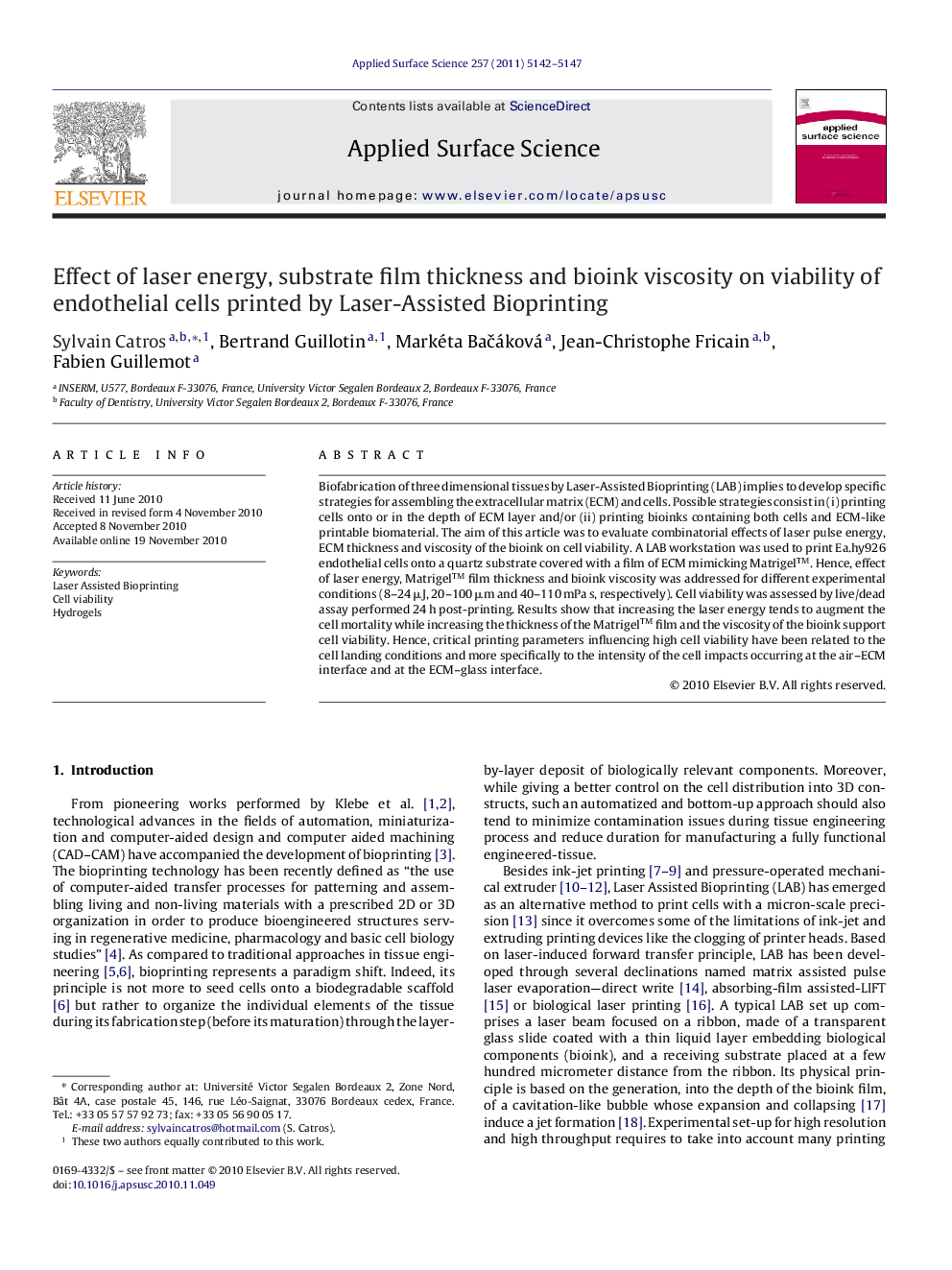| Article ID | Journal | Published Year | Pages | File Type |
|---|---|---|---|---|
| 5364335 | Applied Surface Science | 2011 | 6 Pages |
Biofabrication of three dimensional tissues by Laser-Assisted Bioprinting (LAB) implies to develop specific strategies for assembling the extracellular matrix (ECM) and cells. Possible strategies consist in (i) printing cells onto or in the depth of ECM layer and/or (ii) printing bioinks containing both cells and ECM-like printable biomaterial. The aim of this article was to evaluate combinatorial effects of laser pulse energy, ECM thickness and viscosity of the bioink on cell viability. A LAB workstation was used to print Ea.hy926 endothelial cells onto a quartz substrate covered with a film of ECM mimicking Matrigelâ¢. Hence, effect of laser energy, Matrigel⢠film thickness and bioink viscosity was addressed for different experimental conditions (8-24 μJ, 20-100 μm and 40-110 mPa s, respectively). Cell viability was assessed by live/dead assay performed 24 h post-printing. Results show that increasing the laser energy tends to augment the cell mortality while increasing the thickness of the Matrigel⢠film and the viscosity of the bioink support cell viability. Hence, critical printing parameters influencing high cell viability have been related to the cell landing conditions and more specifically to the intensity of the cell impacts occurring at the air-ECM interface and at the ECM-glass interface.
Research highlightsⶠLaser Assisted Bioprinting parameters have a significant influence on printed cell viability. ⶠIncreasing the laser energy tends to augment the cell mortality. ⶠIncreasing the thickness of the hydrogel film on receiving substrate support cell viability after printing. ⶠIncreasing the viscosity of the cell bioink support cell viability after printing.
